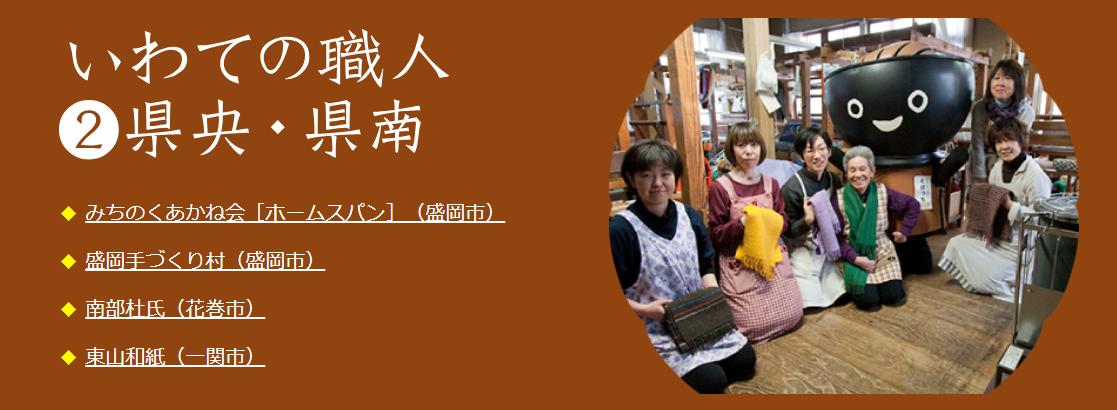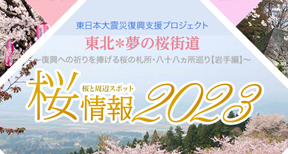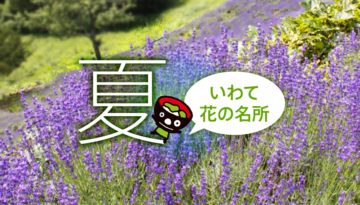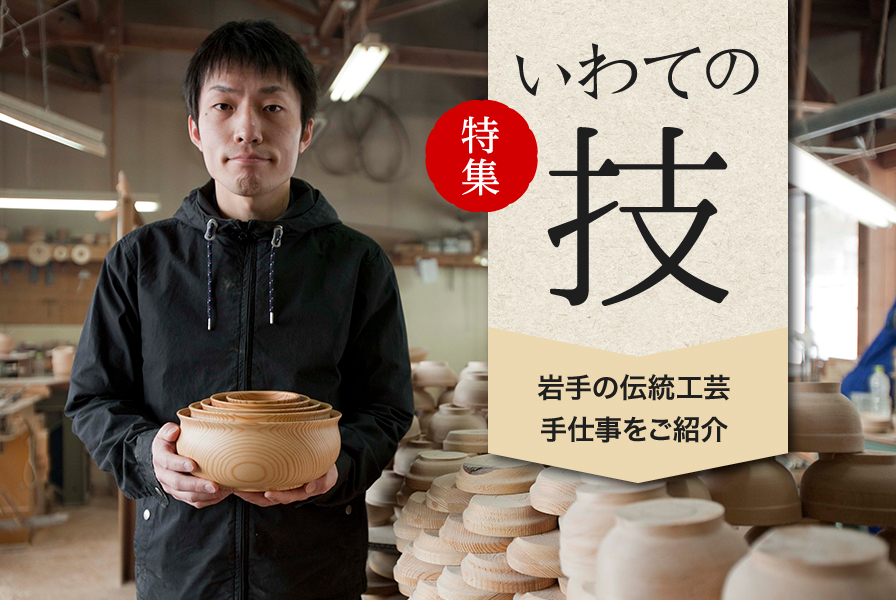
Introducing Iwate's traditional crafts and handicrafts
INDEX

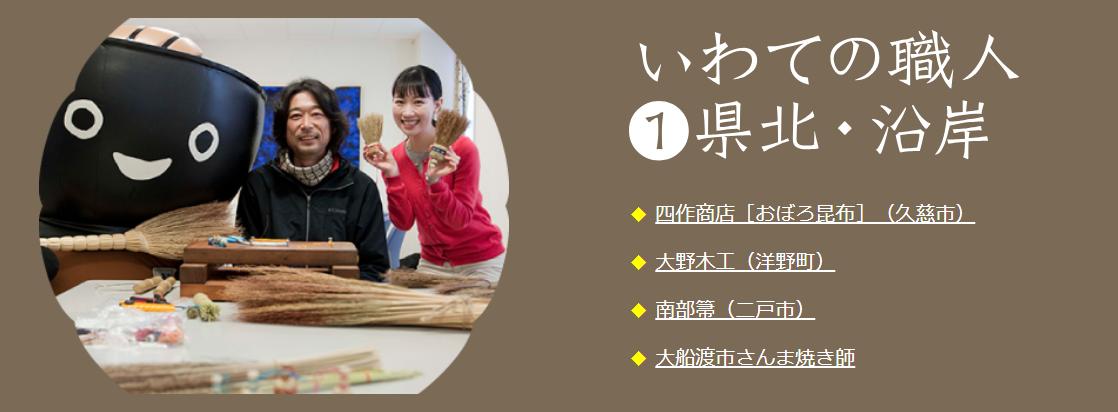
Shisaku Shoten [Oboro Konbu] (Kuji City)
Yuji Shisaku is Iwate Prefecture’s only hand-shaved kelp craftsman.
A veteran of over 50 years of hand-shaving kelp! He learned it while helping out at the family business. The kelp used is natural true konbu from the local Kuji area, and “Oboro konbu” is made by returning dried kelp to vinegar to soften it and then shaving it by hand. Tororo konbu is made by compressing kelp into blocks and cutting it with a machine. Yosaku’s Tororo Kombu is also a popular product, with good taste and aroma, but when you try Oboro Kombu, it is even softer and has a slight sweetness, which is still a high-quality taste.
It is said that the special knives used for hand shaving can damage the blade after only shaving a few pieces, so there are many available, and it is essential to take care of the edge.
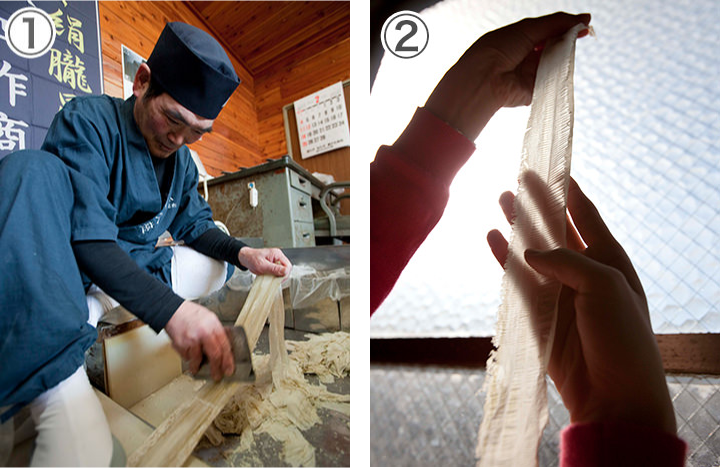
① Because they are hand-scraped, they can only produce 30 to 40 bags a day.
② Even though it is so thin, the taste is strong.

③ A special knife for shaving kelp. You need to prepare a lot because the blade will get damaged after just a few sharpenings.
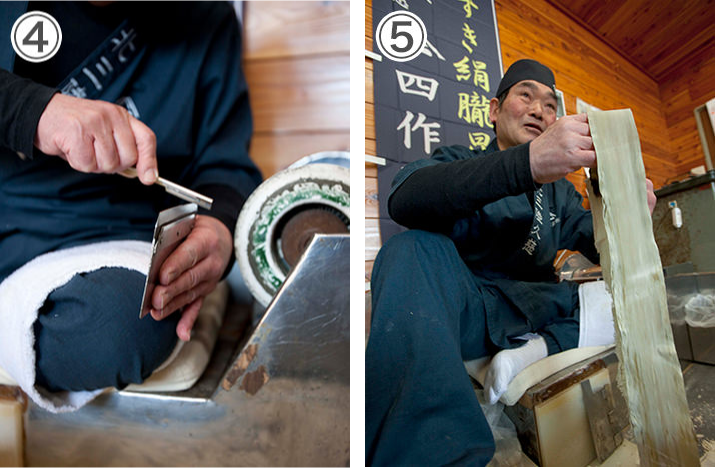
④Cleaning the blade is one of the important tasks that affects the quality of the Oboro konbu.
⑤The remaining kelp after shaving is often used as an ingredient in pressed sushi.
There are two types of Oboro konbu that are produced in this way: black kelp and silk kelp. “Kuroo Konbu” uses the black part of the surface of kelp, allowing you to enjoy the salty scent and deep flavor of kelp. On the other hand, “kinuboro konbu” is made by shaving off the white part in the center and is characterized by its elegant taste and aroma, as well as its fluffy softness.
In addition to adding it to soups, locals recommend wrapping it in rice balls. You can purchase it at the roadside station lottery “Yamase Tofukan” or at the Sanriku Railway Kuji Station shop.
Every Saturday and Sunday, Mr. Yosaku holds demonstration sales, and there are many repeat customers from far away. It’s only available on Saturdays and Sundays, but if you’re in Kuji, be sure to check out the technique.
Demonstrations are held mainly on Saturdays and Sundays at the Michi-no-Eki Kuji/Yamase Dofukan (Dofukan), but there may be times when the event is closed due to circumstances.
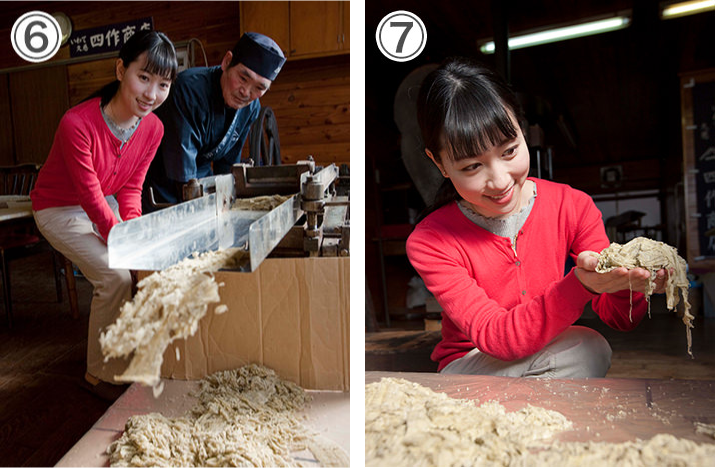
⑥⑦ Machine-shaved tororo kelp is also fluffy!
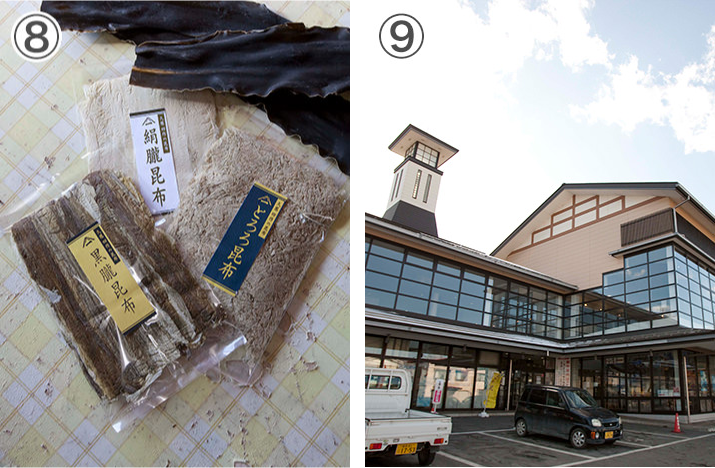
⑧From the left in the photo: Kuroboro konbu, Kinuboro konbu, and Tororo konbu.
⑨ Roadside Station Lottery You can purchase it at Yamase Dofukan.
Shisaku Shoten
- Address
- 8-8 Kawasakicho, Kuji City
- Inquiries
- 0194-53-1524
- Access
- Approximately 50 minutes by car from Kunohe IC
Ohno Mokkou (Hirono Town)
Ohno Mokkou is popular for its warm wooden vessels made using a woodworking wheel.
Mr. Yoshiyuki Iwasaki, a trainee of Ohno Woodcraft Craftsman Development Project, who we spoke to, moved from Takizawa City to Hirono Town three years ago after learning about the project and is working to learn Ohno Woodcraft manufacturing techniques.
Although the workshop is divided into divisions of labor, all processes must be mastered. In between training sessions, he also puts effort into creating works, and his “Kinchaku Bowl” won the Encouragement Award at the 57th Japan Craft Exhibition. I thought the wood grain was beautiful and the 5 bowls were nested, making it highly functional.
On the back of each Ohno Mokkou product, there is a branding stamp with a different design for each maker, making it easy to identify the maker at a glance. I think this is a responsibility towards the product and something that the creator should be proud of.
Recently, I was finally able to have Mr. Iwasaki’s branding iron made for me. Although it is not yet available in stores, it may not be long before we see products with Mr. Iwasaki’s rabbit branding iron in stores. He said he wants to settle down in Hirono-cho and be involved in the business for a long time.

① Handmade one by one using a woodworking wheel.

② Mr. Iwasaki holds the “Kinchaku Bowl” that won the Encouragement Award at the 57th Japan Craft Exhibition.

③④Currently, I am responsible for producing ordered items, but I am also putting effort into creating new works. Mr. Iwasaki’s mark has a rabbit motif.
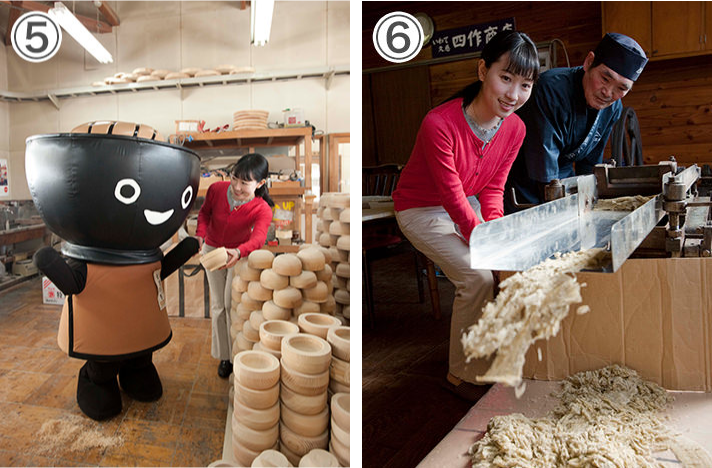
⑤⑥ Lots of vessels! It takes time to complete because it is handmade.
The Ohno Industrial Design Center, to which Mr. Iwasaki belongs, is located within the Ohno Campus complex. There are also various workshops where you can experience making small items such as coasters and spoons as well as wooden utensils at the wood workshop. You can also learn about wood and tools in detail while receiving guidance from a craftsman.
There are also exhibitions and sales in the area, and you can also purchase Ohno woodworking products, so why not go out and see them?

⑦ “Mori no Kobo” on Ono Campus

⑧You can also experience making pottery at the experience workshop.

⑨You can purchase wood products at the Design Center Exhibition Room.

⑩Popular school tableware at childcare facilities across the country. Also recommended for home use.
Ohno Mokko (Ohno Campus)
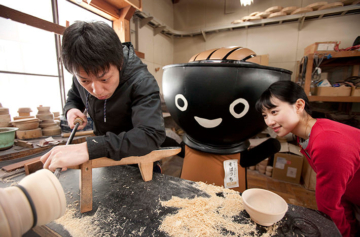
- Address
- 58-12-30 Ono, Hirono-machi, Kunohe-gun
- Inquiries
- 0194-77-3202
- Access
- Approximately 25 minutes by car from Karumai IC
Nanbu Hoki (Ninohe City)
Tomoe brooms were once used in most households. With the spread of vacuum cleaners, opportunities to see them have decreased, but in recent years they have become more popular due to the charm of handmade work and the fact that they are lightweight and silent. Mr. Mokichi Fujimoto is one of the few Nanbu Tomoe broom makers. In addition to farming, I have learned Nanbu broom making techniques and am currently teaching mini broom making experiences at Cassiopeia Messe Nanyato. Many people come from nearby cities and towns, and it seems that the mini-mini type can be completed in about 2 hours, and the slightly larger mini-type can be completed in about 4 hours. It’s no wonder it’s so popular because you can take the finished product home with you.

①② First, try making a mini broom while being shown a model!
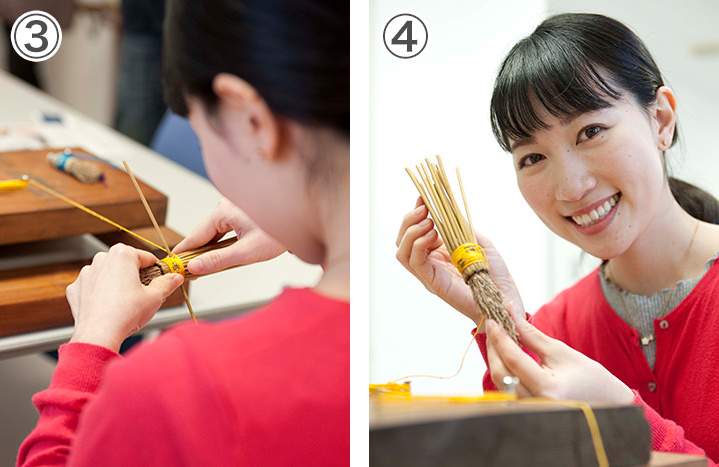
③④ While creating the pattern, weaving the pattern using hemp thread. It features a traditional Okinawan minsa pattern.
The material, “broom sorghum,” is cultivated by themselves, harvested in early autumn, and then threshed and dried by hand. Broom sorghum can grow up to 3 meters in length, making it difficult to harvest. Since he also works in agriculture, he is currently doing his best to make the orders he receives, but he is looking forward to being able to purchase them in stores someday.
Reservations are required for the experience and a minimum of 2 people can be accommodated. Masenkyo and Kindaichi Onsen are also nearby, so why not try your hand at making Nanbu brooms in Ninohe while sightseeing?
*Acceptance is only available during the winter season (January to the end of March)


⑤⑥ We grow and harvest the broom sorghum, which is the material for brooms, ourselves, and use our own tools to make them by hand. The curly tip is a characteristic of Nanbu broom. It traps dirt well.
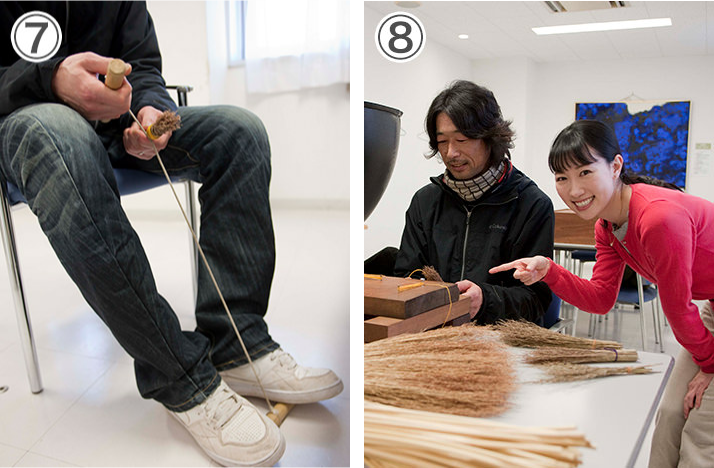
⑦I asked Mr. Fujimoto to tie the handle part tightly.
⑧Final finishing touches!

⑨Completed! You can take home the broom you made during the experience!

⑩Tomoe Houki is extremely easy to use! The small size is perfect as a clothes brush, and the mini size is perfect for cleaning around your desk.
Nanbu broom handmade experience
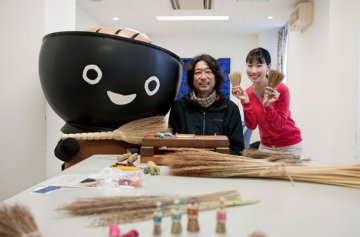
- Address
- Ninohe Wide Area Tourism and Product Center
(Cassiopeia Messe Nanyate) Circle room
68 Moriai, Ishikirisho, Ninohe City - Inquiries
- Ninohe City Tourism Association 0195-23-3641
(Weekdays 8:30-17:00) - Access
- Approximately 10 minutes by car from Ichinohe IC / 0 minutes walk from Ninohe Station (adjacent to the station)
Ofunato city saury baker
The Ofunato City Tourism and Products Association has been conducting the “Sanma Yaki Master” certification exam since FY 2016 as part of the promotion of “Ofunato, the town of fisheries” and “Ofunato, the town of saury.” There is a practical and written exam, and those who pass will receive a certificate and a commemorative towel. If you see a certificate at a hotel or restaurant, you’ll know that the method of grilling saury is approved by the Ofunato City Tourism and Products Association!
We received comments from Ofunato City Tourism and Products Association Managing Director Konno about the Ofunato Sanmaiyaki masters.
“Approximately 70% of those taking the exam in 2017 were from outside Ofunato City, and I believe that our intention was to increase the number of participants from all over the country. We hope that the name of Ofunato will spread throughout the country by making use of our qualifications and being involved in events, and we have heard that Ofunato is actually active in events around the country. As a city-wide event, we will further enhance the environment by offering special benefits at shops and hotels by presenting your exam admission ticket at Our goal is to spread the word nationwide.”
Ofunato City Tourism and Products Association Managing Director Konno

[Left] Sanmayaki master Tabata Shihan [Right] Ofunato City Tourism and Products Association Managing Director Konno
Mr. Konno and Mr. Tabata spoke with smiles. I learned the importance of having fun ourselves too.
There are also many goods such as towels and aprons.
Special feature on Iwate techniques – See traditional crafts
Special feature on Iwate craftsmanship – Iwate craftsmen ②Central/Southern prefecture





